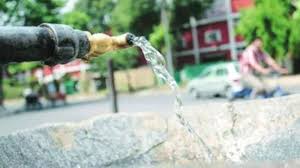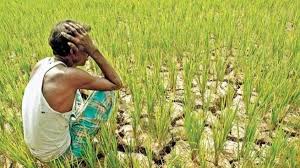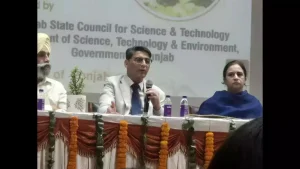Punjab – The water level going down rapidly in Punjab has sparked serious concerns among environmentalists, farmers, and policymakers. Experts of PWRDA warn that the Malwa region is the worst affected, facing an acute depletion of groundwater resources. The crisis poses a significant threat to agriculture, drinking water availability, and overall sustainability in the state. Urgent intervention is required to mitigate the worsening situation.
The Extent of Groundwater Depletion
Recent studies reveal that the water level going down rapidly in Punjab is primarily due to excessive groundwater extraction, erratic rainfall, and lack of sustainable water management practices. Data shows that:

- Punjab’s groundwater level is depleting at an average rate of 1 meter per year in several districts.
- The Malwa region has witnessed some of the sharpest declines, with some areas reporting a drop of 2-3 meters annually.
- According to official estimates, more than 110 out of 138 blocks in Punjab are now classified as ‘over-exploited’ zones.
Experts attribute this alarming trend to unregulated borewell drilling, inefficient irrigation methods, and over-reliance on groundwater for paddy cultivation.
Malwa Region: The Epicenter of the Crisis
The water level going down rapidly in Punjab has impacted Malwa the most. This region, comprising districts such as Bathinda, Mansa, Sangrur, and Barnala, is facing an unprecedented water crisis. The primary reasons include:
- High Paddy Cultivation: Malwa is known for its large-scale paddy farming, a water-intensive crop requiring extensive irrigation.
- Depleting Rainfall Patterns: The monsoon has become increasingly erratic, leading to reduced natural recharge of groundwater.
- Chemical Contamination: Excessive use of fertilizers and pesticides has further deteriorated groundwater quality, making it unsafe for consumption.
Agricultural Impact: A Looming Disaster
Punjab, known as the ‘Granary of India,’ heavily depends on irrigation. With the water level going down rapidly in Punjab, farmers are facing multiple challenges:


- Increased Costs: Farmers are digging deeper borewells, significantly raising irrigation expenses.
- Reduced Crop Yield: Water scarcity is impacting productivity, leading to lower yields in major crops such as paddy, wheat, and cotton.
- Soil Degradation: Excessive groundwater extraction leads to soil salinity, making agricultural land less fertile over time.
If corrective measures are not taken, Punjab’s agricultural economy could face irreversible damage in the coming years.
Environmental Consequences of Groundwater Depletion
The water level going down rapidly in Punjab is not just an agricultural issue but also an environmental crisis. Some of the key environmental impacts include:
- Drying of Rivers and Lakes: Many natural water bodies are shrinking due to excessive groundwater withdrawal.
- Loss of Biodiversity: Declining water levels affect aquatic life and disrupt the ecological balance.
- Land Subsidence: Over-extraction of groundwater leads to land sinking in some areas, posing infrastructure risks.
The ecological imbalance caused by groundwater depletion can have long-term repercussions for the state’s natural resources.
Causes Behind the Crisis
Several factors are contributing to the water level going down rapidly in Punjab:
- Excessive Groundwater Extraction: Punjab’s irrigation system relies primarily on groundwater, with over 14 lakh tube wells extracting water daily.
- Lack of Rainwater Harvesting: Despite erratic rainfall, limited efforts have been made to store and utilize rainwater effectively.
- Industrial Water Usage: Factories and industries consume large quantities of groundwater, further straining resources.
- Deforestation and Urbanization: Large-scale deforestation and urban expansion have reduced natural water absorption, preventing groundwater recharge.
Without addressing these root causes, Punjab’s water crisis is likely to intensify further.
Government Initiatives and Policies
The Punjab government has acknowledged the crisis and initiated various measures to address the water level going down rapidly in Punjab. Some of these efforts include:
- Implementation of Crop Diversification Programs: Encouraging farmers to shift from water-intensive paddy cultivation to less water-dependent crops such as maize and pulses.
- Micro-Irrigation Systems: Promoting techniques like drip and sprinkler irrigation to optimize water use.
- Artificial Groundwater Recharge Projects: Constructing check dams, ponds, and recharge wells to replenish underground water reserves.
- Strict Regulations on Borewell Drilling: Imposing restrictions on unregulated borewell digging to curb excessive groundwater extraction.
Despite these initiatives, experts argue that more aggressive policies and stringent enforcement are needed to prevent further depletion.
Role of Farmers in Water Conservation
Farmers play a crucial role in addressing the water level going down rapidly in Punjab. Some recommended strategies include:
- Adopting Alternate Crops: Switching from paddy to water-efficient crops can significantly reduce groundwater consumption.
- Using Modern Irrigation Techniques: Drip irrigation and rainwater harvesting can help maximize water efficiency.
- Practicing Agroforestry: Planting trees and maintaining green cover can aid groundwater recharge and soil conservation.
- Participating in Government Schemes: Engaging in conservation programs and subsidy-based initiatives to implement water-saving practices.
If adopted widely, these measures can contribute to long-term water sustainability in Punjab.
The Way Forward: Sustainable Solutions
To combat the water level going down rapidly in Punjab, a multi-faceted approach is necessary. Some proposed long-term solutions include:


- Revamping Punjab’s Water Policy: Implementing strict groundwater management laws and ensuring effective enforcement.
- Incentivizing Sustainable Agriculture: Providing financial incentives for farmers practicing water-efficient farming.
- Enhancing Public Awareness: Educating citizens about the importance of water conservation through community programs.
- Strengthening Inter-State Cooperation: Collaborating with neighboring states for integrated water resource management.
A collective effort from the government, farmers, industries, and citizens is essential to restore Punjab’s groundwater balance.
Also Read: Supreme Court on House Demolitions in Uttar Pradesh 2025: A Critical Verdict for Justice
Closing Remarks on Water Level Going Down Rapidly in Punjab
The water level going down rapidly in Punjab is an urgent crisis that demands immediate action. Malwa, the worst-hit region, exemplifies the devastating effects of groundwater depletion on agriculture, the environment, and human health. While government initiatives are in place, stronger enforcement, farmer participation, and sustainable water management practices are crucial for reversing the trend. A well-planned strategy combining conservation, policy changes, and community involvement is the only way to secure Punjab’s water future.

